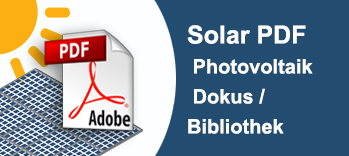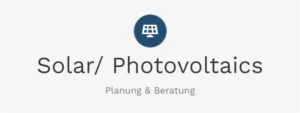Large solar park under discussion: Niederdorf in the Ore Mountains between energy transition and public will
Xpert pre-release
Language selection 📢
Published on: August 10, 2025 / Updated on: August 10, 2025 – Author: Konrad Wolfenstein

Large solar park under discussion: Niederdorf in the Ore Mountains between energy transition and public will – Creative image: Xpert.Digital
Dispute over XXL solar system: This is how much money it could bring to a small community like Niederdorf
33 football fields on the A72: This solar park in the Ore Mountains is heating up emotions
The German energy transition has reached a new dimension: Large-scale photovoltaic systems are increasingly being built along highways and in rural areas. A particularly striking example of this development is currently evident in the small community of Niederdorf in the Ore Mountains, where investors plan to build an exceptionally large solar park the size of approximately 33 football fields along the A72 motorway. This project exemplifies the complex challenges associated with the massive expansion of solar energy in Germany.
The dimensions of the planned project
The planned solar project in Niederdorf far exceeds most other systems in the region. With a total area equivalent to the size of 33 football fields, it is one of the most ambitious solar projects in the Erzgebirge district. Mayor Stephan Weinrich of the CDU confirmed that two separate building applications for open-space photovoltaic systems have already been submitted, with the larger of the two applications causing considerable debate among the municipal council members.
The plant is to be built along the busy A72 motorway, a key traffic artery connecting the Ore Mountains with other regions of Saxony. This choice of location is no coincidence: Since January 2023, areas within a 200-meter strip along motorways have been considered privileged locations for photovoltaic systems, which significantly simplifies the approval process.
The legal framework and privileged areas
The legal situation has fundamentally changed in recent years in favor of solar parks along transport routes. The Act on the Immediate Improvement of the Framework Conditions for Renewable Energies in Urban Development Law created a new category of privileged areas. Photovoltaic systems installed on areas along highways or multi-track railway lines of the overarching network, with a maximum distance of 200 meters from the outer edge of the roadway, no longer require a development plan.
This privileged status drastically simplifies the approval process. While conventional ground-mounted systems often have to undergo years of planning procedures, privileged projects can apply directly for a building permit. Bavaria has taken this trend even further and, since 2025, has even made such systems completely exempt from approval, provided they meet the privileged criteria.
Technical and economic aspects
Modern solar farms have evolved into highly efficient energy generation facilities. The photovoltaic modules used today achieve efficiencies of over 24 percent, allowing approximately one megawatt of power to be installed per hectare. This means that one hectare of solar farm can produce approximately one million kilowatt-hours of clean electricity annually, equivalent to the annual needs of more than 250 average households.
The investment costs for such systems have steadily declined in recent years. While just a decade ago, costs of over €2,000 per installed kilowatt peak were common, today's investment costs typically range between €500,000 and €1,000,000 per hectare. This cost reduction makes solar parks one of the most cost-effective forms of electricity generation, with new systems capable of producing electricity at a cost of approximately five to seven cents per kilowatt hour.
Citizen resistance and municipal concerns
Despite the favorable legal framework and economic attractiveness, many solar park projects face significant public acceptance issues. The Niederdorf case is a prime example: The municipal council has expressed significant reservations about the larger of the two planned projects, highlighting the complex conflicting interests that clash in such projects.
Similar conflicts are also evident in other regions of the Ore Mountains and Saxony. A particularly prominent example is the resistance to a planned 110-hectare solar park along the A72 near Lengenfeld, where citizens' initiatives successfully negotiated compromises with investors and city representatives. These protests illustrate that the legal privileges granted to motorway locations do not automatically lead to broad social acceptance.
Interestingly, however, nationwide surveys paint a more nuanced picture. According to a representative survey, approximately 86 percent of Germans are positive about solar parks near their homes, and only 14 percent fundamentally oppose such projects. This suggests that the opposition is often less fundamental than media reports suggest.
Environmental impacts and biodiversity
An important aspect of the solar park debate concerns the ecological impact of such facilities. Contrary to widespread fears, scientific studies show that well-planned solar parks can have positive effects on biodiversity. A recent study by the German Association for New Energy Industries (BNE) of 30 German solar parks revealed impressive figures: The facilities are home to over 380 plant species, more than 30 butterfly and bird species, and 13 bat species.
What's particularly noteworthy is that many solar parks are becoming important habitats for endangered species. For example, skylarks, whose populations have declined sharply in intensive agricultural landscapes, benefit from the resulting rest areas between the solar modules. Rare amphibian species such as the yellow-bellied toad are also finding new habitats in the watering holes between the panels.
The Federal Agency for Nature Conservation emphasizes that solar parks can lead to significant ecological improvement, especially on previously intensively used arable land. The avoidance of pesticides and intensive soil cultivation, combined with extensive management through grazing or infrequent mowing, creates habitats that have become rare in the modern agricultural landscape.
Land use and agriculture
One of the central concerns regarding large-scale solar parks is the loss of agricultural land. These concerns are certainly justified, but must be put into the proper context. Germany has approximately 16.6 million hectares of agricultural land, of which 82 percent is used for feed and food production and 13 percent for energy crops.
To achieve the German government's expansion targets by 2030, approximately 95,000 hectares would be needed for solar parks – equivalent to just 0.6 percent of agricultural land or 0.3 percent of Germany's total land area. This share is significantly smaller than the area currently used to grow energy crops such as corn for biogas plants.
In addition, innovative utilization concepts are being developed, such as agri-photovoltaics, which combine agricultural production and electricity generation. In such systems, a maximum of 15 percent of the area is covered with solar modules, while 85 percent remains agriculturally usable and can even continue to receive EU funding.
New: Patent from the USA – Install solar parks up to 30% cheaper and 40% faster and easier – with explanatory videos!

New: Patent from the USA – Install solar parks up to 30% cheaper and 40% faster and easier – with explanatory videos! – Image: Xpert.Digital
At the heart of this technological advancement is the deliberate departure from conventional clamp fastening, which has been the standard for decades. The new, more time- and cost-effective mounting system addresses this with a fundamentally different, more intelligent concept. Instead of clamping the modules at specific points, they are inserted into a continuous, specially shaped support rail and held securely. This design ensures that all forces occurring – be they static loads from snow or dynamic loads from wind – are evenly distributed across the entire length of the module frame.
More about it here:
Niederdorf and Co.: Solar parks as a driver for regional value creation
Economic opportunities for municipalities
For municipalities like Niederdorf, solar parks can bring significant economic benefits. Direct municipal revenues are derived from various sources: trade tax revenues for larger systems can amount to several hundred thousand euros annually, as demonstrated by the solar park in Lengenfeld, which is expected to generate €400,000 annually for the town.
In addition, since 2021, the Renewable Energy Sources Act has allowed plant operators to make voluntary payments to local communities of 0.2 cents per kilowatt hour generated. For a plant the size of the planned Niederdorf project, this would mean additional revenue of several tens of thousands of euros per year.
However, regional added value goes far beyond direct tax revenue. During the construction phase, contracts are generated for local tradesmen, electrical contractors, and civil engineering companies. Regular maintenance work, landscaping, and security services are required during ongoing operations, which also create local employment.
Challenges of the approval process
Despite the privileged status of highway sites, the permitting procedures remain complex and time-consuming. Even privileged projects must undergo extensive environmental assessments, species protection reports, and glare control analyses. The preparation and submission of all required documents can take several months, and processing by the authorities often takes an additional six to twelve months.
A special aspect of highway sites is the glare testing for traffic. The German Federal Highway Corporation (Autobahn GmbH) has stringent requirements for glare protection, which requires special planning and often additional protective measures. This can increase project costs and extend planning time.
Grid connection procedures pose another potential hurdle. The responsible grid operators must assess whether the existing infrastructure can handle the additional feed-in. In regions with already high feed-in from renewable energy sources, this could lead to costly grid expansion measures.
Germany-wide development and expansion goals
The Niederdorf project is part of a nationwide movement toward large-scale solar parks. Germany set a new record for photovoltaic expansion in 2024: With over 15 gigawatts of newly installed capacity, it was the strongest year of expansion in the history of German solar energy. Total installed photovoltaic capacity exceeded the 100 gigawatt mark for the first time in early 2025.
However, to achieve the federal government's climate goals, this expansion must be significantly accelerated. By 2030, 215 gigawatts of photovoltaic capacity are to be installed – meaning an annual addition of approximately 22 gigawatts. About half of this is to be realized through ground-mounted systems, which underscores the importance of projects like the one in Niederdorf.
Citizens' participation and increase in acceptance
Modern solar park developers are increasingly relying on public participation models to increase acceptance of their projects. Such models enable residents and local communities to participate financially in the systems and thus directly benefit from the returns.
Successful examples show that even small minimum investments of just a few hundred euros can be sufficient to enable citizens to participate. A solar park in Maßbach, for example, attracted 50 participants within a week, investing over 300,000 euros.
Such participation models have several advantages: They increase local acceptance, create direct financial benefits for residents, and strengthen the sense of participation in the energy transition. At the same time, they also enable people without suitable roof space to actively contribute to the energy transition.
Innovative storage solutions and grid integration
Modern solar park projects are increasingly going beyond pure electricity generation. One example is the community solar park in Reckertshausen, which was equipped with large-scale storage systems that collect solar power during the day and also make it available at night. Such combinations of photovoltaics and battery storage can supply up to 800 households with stored solar power around the clock.
This development is particularly important for grid stability, as it can compensate for the characteristic fluctuations of solar power generation. Battery storage also makes it possible to store electricity during low demand periods and release it again during peak periods, contributing to the stability of the entire power system.
Regional energy transition in the Ore Mountains
The Ore Mountains are currently experiencing a remarkable transformation in their energy supply. After decades of dependence on coal and other fossil fuels, numerous renewable energy projects are emerging. In addition to the planned project in Niederdorf, several solar parks are already in operation in the region, including a 4.2-megawatt facility in Neukirchen/Erzgebirge and a solar park at the Markersbach pumped-storage power plant.
Citizen energy cooperatives like Bürger Energie Erzgebirge play an important role in the regional energy transition. They supply customers with electricity from local renewable sources and ensure that added value remains in the region. Such initiatives demonstrate how the energy transition can grow from the bottom up and gain broad social support.
Challenges and criticisms
Despite all the positive aspects, legitimate concerns remain regarding large-scale solar parks. Critics argue that the facilities could alter the landscape and impair the tourist appeal of regions. For the Ore Mountains, a UNESCO World Heritage Site, such concerns are certainly justified.
Long-term land use also raises questions. Solar parks typically operate for 20 to 30 years before the modules need to be replaced or the systems dismantled. Responsibility for proper dismantling and recultivation of the land must be clarified during the project planning phase.
Another point of criticism concerns the uneven distribution of benefits and burdens. While the financial gains often flow to external investors, local communities bear the visual and infrastructural burdens. Citizen participation models and municipal participation can ensure a fairer balance of interests.
Highways as energy spears: The potential for solar power expansion
The planned solar park in Niederdorf exemplifies the challenges and opportunities of the German energy transition. The project demonstrates both the enormous potential of large-scale solar systems and the need for a balanced dialogue between investors, municipalities, and citizens.
The privileged position of motorway sites will further accelerate the expansion of solar parks. Estimates suggest that there is potential for at least 72 gigawatts of installed capacity along German motorways – equivalent to about one-third of the total capacity targeted for 2030.
However, the successful implementation of the energy transition depends not only on the legal and technical prerequisites. It is equally important to take residents' legitimate concerns seriously, implement transparent planning procedures, and create fair opportunities for participation. Only if the energy transition is understood and designed as a community-based project can it be successful in the long term.
The Niederdorf example will demonstrate whether this balance can be achieved. The municipal council's decision will not only determine the future of this specific project, but could also serve as a guide for similar projects in other municipalities in the Ore Mountains and throughout Germany. In any case, the case highlights the complexity of the energy transition and the need to consider technical, economic, ecological, and social aspects equally.
Look, this little detail saves up to 40% installation time and costs up to 30% less. It's from the USA and patented.

New: Assemble-ready Solar systems! This patented innovation accelerates your solar construction massively
The heart of ModuRack's innovation is its departure from conventional clamp fastening. Instead of clamps, the modules are inserted and held in place by a continuous support rail.
More about it here:
Your partner for business development in the field of photovoltaics and construction
From industrial roof PV to solar parks to larger solar parking spaces
☑️ Our business language is English or German
☑️ NEW: Correspondence in your national language!
I would be happy to serve you and my team as a personal advisor.
You can contact me by filling out the contact form or simply call me on +49 89 89 674 804 (Munich) . My email address is: wolfenstein ∂ xpert.digital
I'm looking forward to our joint project.
























